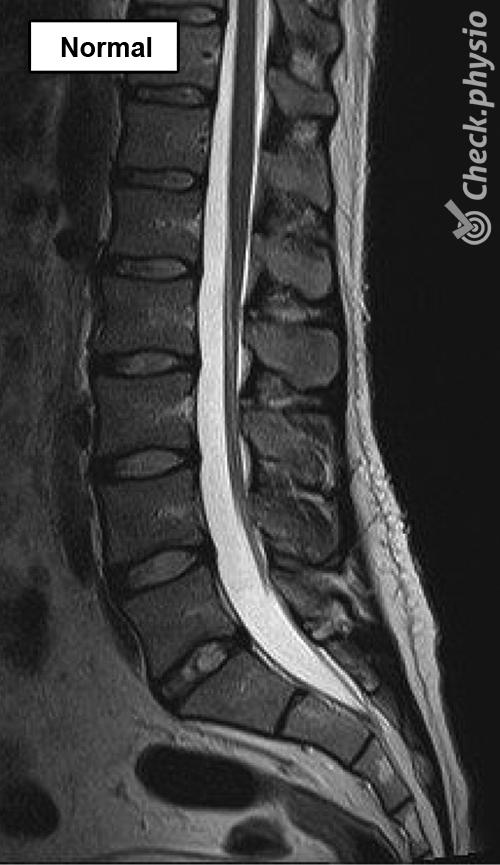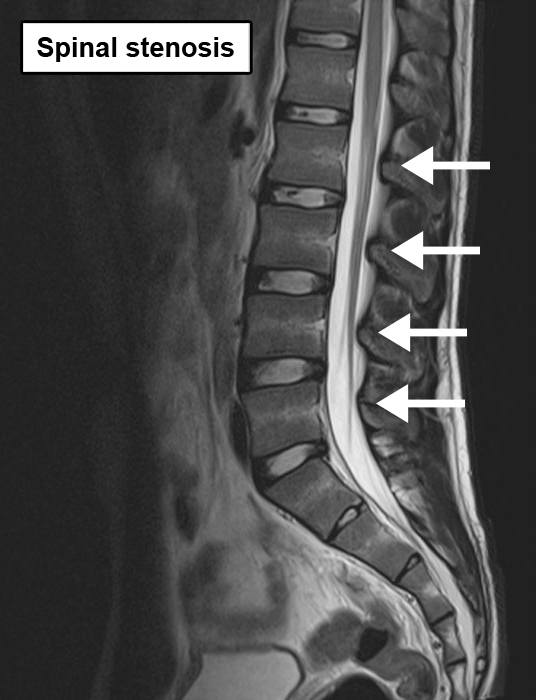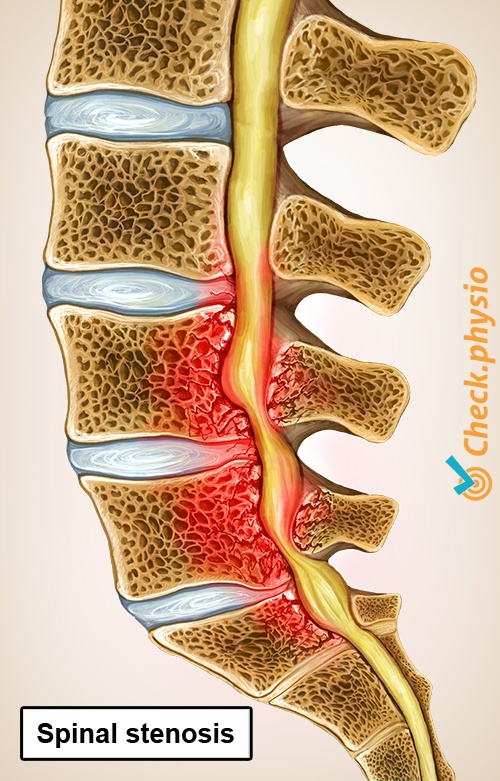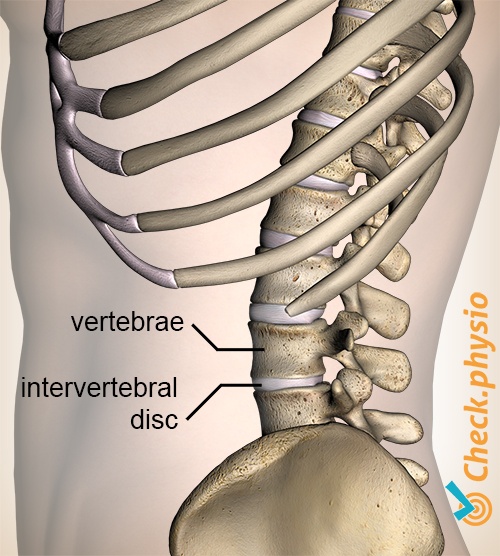- Conditions
- Lumbar spinal stenosis
Lumbar spinal stenosis Neurogenic claudication
Introduction
The spinal column is narrowed in the case of spinal stenosis. This causes impingement of one or more nerve roots. The impinged nerves may cause pain in the legs while walking. This is also referred to as neurogenic claudication.

Description of condition
The lumbar spinal column is formed by the vertebrae of the lower back. The vertebrae are stacked on top of each other and form a long vertical canal. A large bundle of nerves runs through this canal. In canal stenosis of the lumbar spinal column, the spinal canal is narrowed. This can result in impingement of the nerve roots in the canal. This results in symptoms in the area that is innervated by the nerve root.
Cause and history
A person can be born with a narrow spinal canal, or it can develop gradually. Reasons for narrowing are for example: the result of osteoarthritis, a prolapsed intervertebral disc or the thickening or folding of a ligament structure in the spinal canal (the ligamentum flavum). Compressed discs, tumors, infections and fractured vertebrae may also result in narrowing of the spinal canal.
Signs & symptoms
Often the patient will have had back problems for years. The back pain usually decreases significantly, followed by the typical symptoms in the legs.
- Pain and fatigue in the legs (heavy or lame sensation).
- The symptoms occur after walking or standing for some time.
- Irritation, pins and needles, numbness and loss of strength.
- In some cases, bladder problems may also occur.
- The symptoms occur when the back is arched. Lying on the stomach or the back makes the symptoms worse.
- Sitting with a rounded back and bending over usually provides immediate relief. Cycling is not generally a problem.
Diagnosis
The diagnosis is made based on the symptoms and a physical examination. X-rays, a CT scan and an MRI may be helpful in obtaining an image of the narrowing and determining its exact location.
Treatment and recovery
If the narrowing is caused by aging or wear-and-tear of the spinal column, conservative treatment is often the most sensible option initially. The patient will be advised to avoid activities that provoke pain, such as long walks and long periods of standing. Advice on posture can help the patient to reduce hollowing of the lower back, which reduces the symptoms. Leaning on a shopping trolley or walker for support also helps, as this causes a slight rounding of the back. In the long term the symptoms usually disappear without treatment.
Other treatment options include wearing a corset or brace, treatment with medication, epidural corticosteroid injections and traction. People who do not smoke have a greater chance of successful conservative treatment.
Surgical treatment will be considered if the conservative approach does not produce results. This relieves compression of the affected nerve root(s) by creating more space in the spinal canal.
Exercises
The exercise program for lumbar canal stenosis is aimed at reducing the symptoms.
More info
You can check your symptoms using the online physiotherapy check or make an appointment with a physiotherapy practice in your locality.
References
Nugteren, K. van & Winkel, D. (2006) Onderzoek en behandeling van lage rugklachten Houten: Bohn Stafleu van Loghum.
Cleland, J.A. & Koppenhaver, S. (2011) Netter's orthopaedic clinical examination: an evidence-based approach 2nd ed. Philadelphia: Saunders Elsevier.
Nugteren, K. van & Winkel, D. (2008) Onderzoek en behandeling van spieraandoeningen en kuitpijn Houten: Bohn Stafleu van Loghum.



